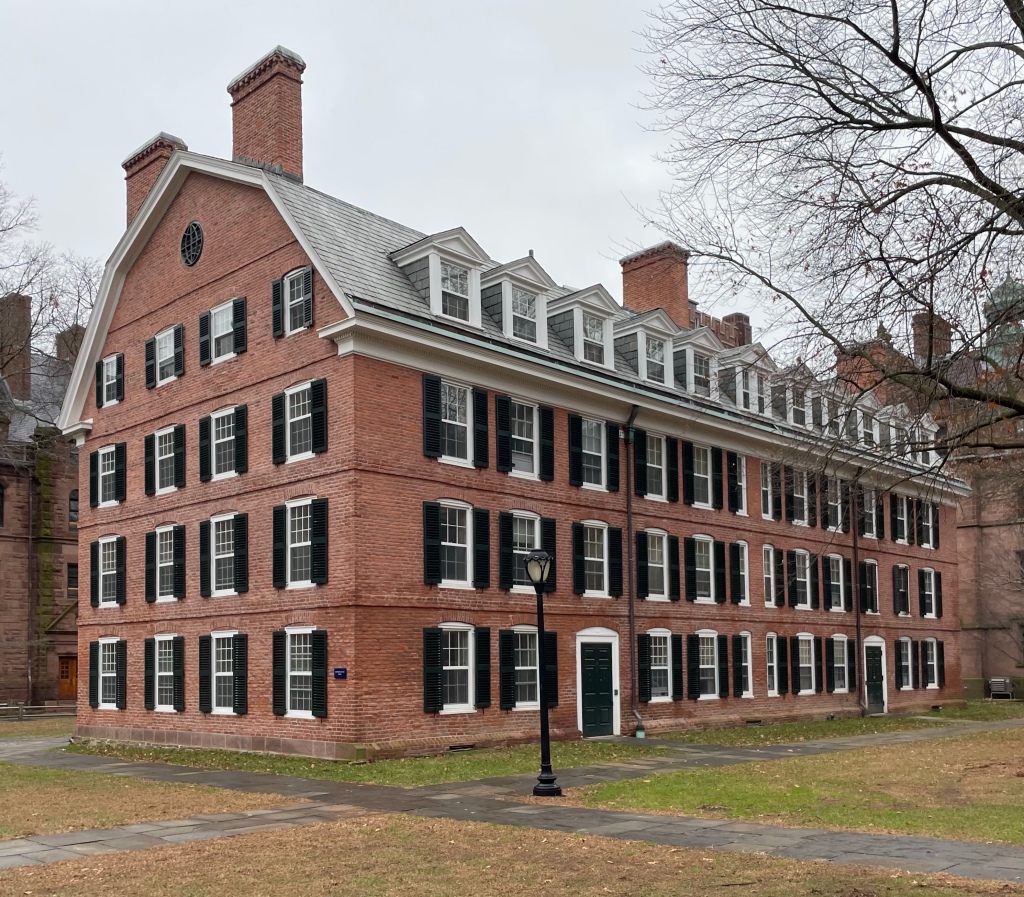
Located in the Old Campus Courtyard of Yale University, McClellan Hall stands as an early example of Colonial Revival on the college’s campus. Built in 1924 across from and as a conscious reproduction of the 1752 Connecticut Hall, McClellan Hall adds to the architectural diversity of the Yard, providing some warm red brick to the mix. The building was constructed thanks to a financial gift to Yale by Helen Mynderse McClellan in memory of her late husband Edwin McClellan (1861-1924), Yale ’84. The college hired architect Walter B. Chambers, who would design the building to provide symmetry in the yard against the one Georgian building there, Connecticut Hall. This was following a recommendation by campus architect James Gamble Rogers who advocated for this, stating that the Colonial style was enhanced by symmetrical groupings. The dormitory, which became known as “Hush Hall”, was a secret until workers began digging in the Yard. The decidedly Gothic style campus was disrupted by the Colonial building, which was more Harvard than Yale, and protest began by some students and faculty. President Angell would have to suspend construction for two months to allow the furor to die-down. Today, McClellan Hall is an important visual aspect of the yard, providing a beautiful tapestry of styles within the enclosed space.
